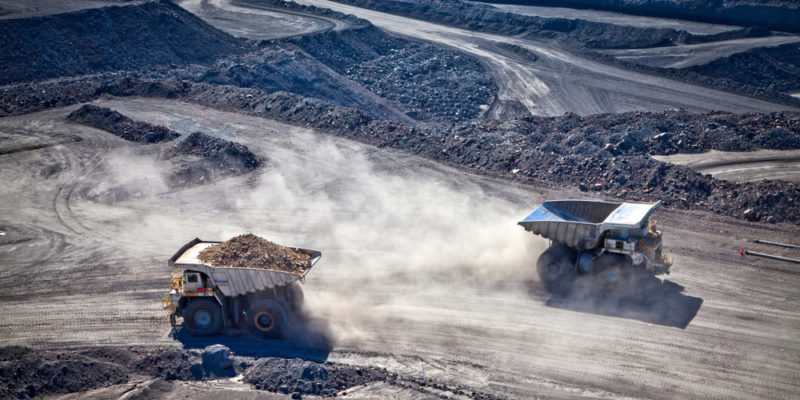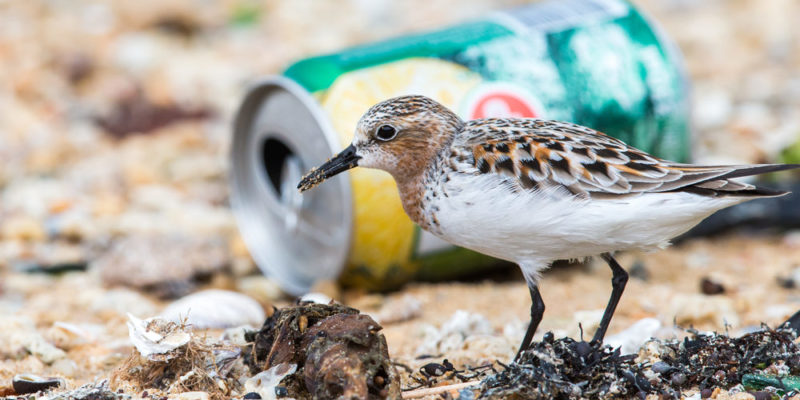We explain what soil contamination is and the contaminating factors. In addition, the impact on living beings and more.
What is soil pollution?
Soil contamination is the alteration of the earth 's surface due to the presence of substances and elements that are harmful and that trigger a degenerative process of the earth and water .
Soil is made up of a complex mix of minerals, organic and inorganic matter, water, and an enormous diversity of life forms . In a balanced and natural context, the soil is capable of performing a filtering job in which:
- It purifies the water and elements from the surface until it reaches the depths of the groundwater to obtain pure water.
- Process inert organic matter to obtain fertile soil.
- It processes waste substances so that as they go through the various layers and processes of the soil, those substances break down.
Soil formation comprises a very slow and complex process. Soil is a finite resource and recovery is only possible over the course of a few decades, hundreds of years, or even longer. Soil degradation affects food, water, air, organisms and other human and non-human animals .
Among the main polluting factors are underground fuel storage tanks, pesticides, sewage waste, chemical waste resulting from industrial production and garbage generated by humanity.
Soil pollution background
Soil contamination is a process that developed gradually and dates back to ancient times and even prehistory as human actions became more complex.Starting with the discovery of fire in the Paleolithic , forest fires could generate toxic volatile substances , such as ashes. During the Metal Age, the discovery of the transformation of metals was a process that contributed to the imbalance of the soil after the large amounts of discarded metallic substances and elements.
Since ancient times, the development of societies has continued to increase until reaching huge cities and cosmopolitan cities . Population growth, population concentration, and industrial activity contributed to generating a high level of waste that inevitably polluted the soil, water, and air.
However, until the 1980s soil contamination was not taken into account as part of environmental issues. Only air and water pollution were discussed , but not the degradation and irreparable damage to fertile land.
The world began to understand the environmental importance of the impact of soil contamination from the declaration of the "European Soil Charter" developed by the European Community in 1972.
The charter stated that the soil is one of humanity's most precious assets, animals and plants, and that it is a limited resource that is easily destroyed. Therefore, it must be protected against erosion, pollution, agricultural and livestock practices and the damage caused by urban development.
The problem acquired greater international weight at the Rio de Janeiro Summit in 1992 , in which the importance of soil protection and the need for sustainable development were recognized.
However, over the years the lack of commitment of most nations became evident, although the collective consciousness is growing and advocates the need to preserve the soil and actively participate in reducing pollution.
Soil contaminating factors
 The contaminating factors of the soil can be diverse. The two general types of contaminants that stand out are:
The contaminating factors of the soil can be diverse. The two general types of contaminants that stand out are:Pollutants from natural springs. It is the type of pollution that arises from catastrophes or natural phenomena. For example: the lava that emerges from a volcano and that can contaminate the ground and, gradually, the waters of the subterranean layers.
Contaminants from artificial springs. It is the type of contamination that arises from the impact of intentional or accidental human actions. Among the main factors are:
- The rubbish that is thrown anywhere. Urban and industrial areas are those with the greatest risk of soil contamination, due to the concentration of productive and consumption activities that generate large levels of waste. The lack of regulation and social awareness means that waste is not processed properly, in order to reduce its negative impact as much as possible. Waste should be recycled where possible and garbage should be separated according to its properties and disposed of in places where it can be processed.
- Pesticides for industrial and domestic use. They are polluting chemical substances, such as arsenic or garden pesticides, that irreversibly alter the properties of the soil and water and impact the living beings that feed on them.
- The exploitation of oil . It is an activity that pollutes, both during its extraction and its subsequent use in consumer products. The combustion that occurs in the extraction process and hydrocarbon spills , which can occur accidentally or through negligence, cause irreversible damage to the ecosystem .
- factories and industries. They are production systems that encourage the exploitation of natural resources, sometimes in an indiscriminate manner, and that generate waste and industrial discharges in excess during their productive performance. As a consequence, entire ecosystems are damaged. For example: when implementing a mining industry, the native vegetation of the place is removed, which impacts the survival of animals, explosives are used to access underground and chemicals are used to manipulate minerals. All these wastes are deposited in the open air, they are at risk of spills and they leave irreparable damage.
- indiscriminate deforestation . It is an activity that is carried out, increasingly, with greater intensity and with insufficient controls. As a consequence, the soils erode and deteriorate due to the lack of vegetation that contains the dragging of rainwater and the overflow of watercourses. These factors, among others, have a direct impact on global warming and climate change.
- Agricultural exploitation. It is an activity in constant increase at the cost of the deterioration of the nutrients of the fertile soil, which consists of a layer of the earth's surface that required many centuries for its formation. This area is destroyed due to large-scale monoculture agriculture, which covers extensive territories with non-native plantations and crops to produce balanced feed for livestock. In addition, the rest time of the soil between harvests is not respected. As a consequence, the soils become sterile, that is, poor in minerals and are no longer suitable for agriculture.
- Radioactive or nuclear materials. They are the most dangerous pollutants consisting of radioactive elements that have the ability to emit gamma rays protons and electrons. The main sources of radioactive contamination are in industrial activity, with power plants, and in military activity, with military tests and bombs. To a lesser extent, nuclear energy is also used in small doses in some medical practices.
Impact of pollution on living beings
 Soil contamination causes a chain reaction of secondary effects, such as various problems in human and non-human animals, among which the following stand out:
Soil contamination causes a chain reaction of secondary effects, such as various problems in human and non-human animals, among which the following stand out:
- Mutations.
- infertility
- Genetic diseases, such as cancer.
- Babies born with malformations.
- Species extinction.
Soil recovery
The recovery of soils or stop polluting them is possible as long as appropriate social and environmental policies are applied, in addition to individual change in awareness.The intensity with which humanity consumes, from the exploitation of finite natural resources, and the amount of unprocessed waste, resulting from the excessive level of consumption, does not allow respecting the cycles of nature to assimilate that impact.
Each person has to be aware of the imprint generated by all their actions . From the product you choose to buy, when many times you do not need it, when you choose to buy one product over another, without understanding what they are made of or how they were manufactured, or when you throw waste with the garbage when it could be recycled.
Legislation, restrictions and obligations are key to regulating the production and exploitation of natural resources . However, that alone is not enough. It is the duty of each person to understand that individual change, despite not transforming reality in the short term, is the first step to achieving long-term improvement for future generations of living beings.
The above content published at Collaborative Research Group is for informational and educational purposes only and has been developed by referring to reliable sources and recommendations from technology experts. We do not have any contact with official entities nor do we intend to replace the information that they emit.
Luke is passionate about fostering student involvement and connection. He studied psychology for his major and likes learning about the past. Luke aims to specialize in artificial intelligence and cybersecurity. .
Leave a reply
Your email address will not be published. Required fields are marked *Recent post

Sport: What Is It, Types, Risks, Features, Characteristics and Examples

Dogs: Emergence, Features, Characteristics, Feeding and Breeds

Story: Definition, Elements, Structure, Features and Characteristics

